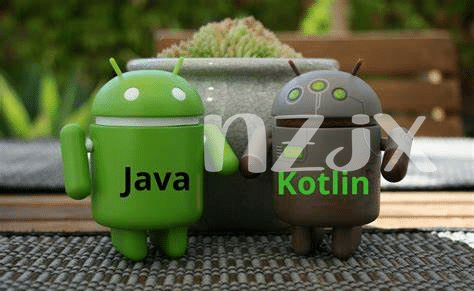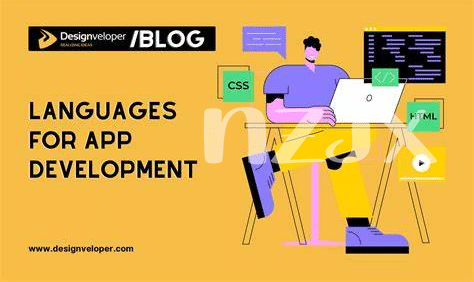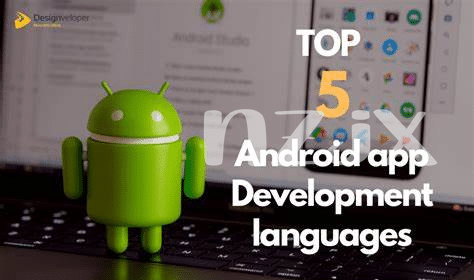- The Speed Showdown: Java Vs. Kotlin 🏎️
- Learning Curve: Kotlin’s Seductive Simplicity 📚
- Java’s Robust Legacy: Boon or Bane? 🏰
- Kotlin Coroutines: Asynchronous Magic Unveiled 🧙♂️
- Tooling and Support: Friends or Foes? 🔧
- Community and Resources: Finding Your Tribe 🤝
Table of Contents
ToggleThe Speed Showdown: Java Vs. Kotlin 🏎️
Imagine lining up two race cars on a track, one sleek and modern, the other trusted and time-tested. In the tech world, our race is between two coding languages, Java and Kotlin, each with its own set of fans in the stands as Android’s developing champs. So, which will help you cross the finish line of app creation more swiftly? When it comes to speed, Java has been the go-to engine, powering through the years with known reliability. Its performance is like a well-oiled machine, mercilessly efficient and perfectly tuned to Android’s intricate mechanics. Yet, Kotlin has emerged, a turbocharged newcomer, and has quickly proven that it’s no slouch on the racetrack. It’s designed to zip around Java’s more cumbersome aspects, offering developers shortcuts that can rev up the coding process.
Now let’s peek under the hood with some hard numbers. 📊
| Aspect | Java | Kotlin |
|---|---|---|
| Compilation Time | Fast | Slightly slower |
| Runtime Performance | Efficient | Comparable |
| Code Conciseness | Verbose | Concise |
| Learning Ease | Moderate | Easier |
Java might churn out code at a brisk pace, and its runtime performance hardly misses a beat. But Kotlin plays out its efficiency in a different realm. With less code needed for the same tasks, Kotlin allows developers to weave intricate functionalities without the added bulk, potentially saving precious time during the build phase and reducing the risk for errors. Factor in Kotlin’s modern tricks to dodge common pitfalls, and developers can find themselves speeding along, delivering polished apps at an impressive rate. The key is balancing the need for raw speed with the finesse of modern features, ensuring that every second spent in app development counts toward a superior user experience. 🏁🛠️
Learning Curve: Kotlin’s Seductive Simplicity 📚
Imagine walking into a room filled with all the tools you’d ever need to create something extraordinary, only to realize that everything is already organized and labeled for your convenience. That feeling of relief and readiness—that’s what it feels like for newcomers to step into the world of Android development with Kotlin. Unlike its older cousin Java, which can feel like unpacking a storeroom of well-used, but sometimes overwhelming tools, Kotlin greets you with a streamlined, modern workspace. 📚👩💻
Kotlin takes the cake when it comes to making your development journey less of a steep hill and more of a smooth ramp. Its clean syntax is easier on the eyes and far less complicated to grasp compared to Java’s more verbose and rigid structure. This means less time scratching your head over how to express your ideas in code and more time actually bringing them to life. The beauty of Kotlin also lies in its thoughtful design, which helps prevent common programming mistakes that can lead to app crashes, ensuring that newcomers can code with confidence. 🛡️
But what about when you need a bit of extra help or want to fast-track your learning? Kotlin’s got your back. There’s a bustling community and plenty of resources out there. In fact, if you’re keen on blending your newfound coding skills with some beats, check out what is the best metronome app for android in 2024. It’s little nuggets of information like this, combined with Kotlin’s welcoming approachability, that create an engaging learning experience tailored for efficiency and growth. 🚀
So while Java may feel like a rite of passage for some developers, Kotlin promises a journey where your ideas take flight quicker with an intuitive language tailored for swift learning and productivity.
Java’s Robust Legacy: Boon or Bane? 🏰
Imagine opening an old treasure chest; the hinges creak and the lock turns with effort. That’s a bit like diving into Java’s world of programming for Android. The language has been around for more than two decades, and it’s got a vast wealth of tools, libraries, and knowledge just waiting to be used – a real advantage for developers who have been using it for years. 🏰 But here’s the rub: that same long history can sometimes feel like a heavy chain around the ankle. It’s true that for rookies and even some seasoned coders, wading through this deep sea of Java legacy can be daunting.
The question keeps popping up: is Java’s extensive background helping us run faster or holding us back? 🔐 For every problem Java can solve, there’s often an old way and a newer, sleeker method. The thing is, not everyone’s been briefed on the latest updates. Some folks are so used to the traditional approach that they might be missing out on new shortcuts. This means that as the Android world zooms ahead, Java sometimes has to play catch up. Now, don’t get it twisted; Java’s long rule isn’t just a tale of woe. There’s a lot of power in that legacy, with real muscle in its reliability and familiarity. It’s just about knowing when to lean on that solid castle wall, and when to peek out and embrace quicker, nimbler paths. 🌉 So, whether Java’s robust ancestry is a boon or bane can depend a lot on who’s asking, and what treasure they’re hoping to find in that big, old chest.
Kotlin Coroutines: Asynchronous Magic Unveiled 🧙♂️
Imagine you’re a magician casting spells in the world of app making. With a wave of your wand, you want your app to do many things at once without getting bogged down. Now, what if I said this kind of magic is real and it’s called coroutines in Kotlin? 🧙♂️ These are powerful spells that let you handle multiple tasks smoothly without tying up your app’s flow. They’re like a secret passage through the busy streets of codesville, keeping things moving without any traffic jams. While Java does tasks in a straightforward line, Kotlin coroutines are like a street artist smoothly juggling tasks, keeping the performance swift and the user happy.
With coroutines, Kotlin allows you, the app creator, to perform long-running tasks, like checking the Internet for the latest scores or downloading images, without freezing up the screen and making users wait. It’s like having an assistant do these chores in the background. There’s no complex spellbook to follow; Kotlin keeps it quite easy to learn and use. 👍
For instance, when you want to find out what is the best metronome app for android in 2024, a coroutine can manage this in the background while users are still tapping their toes to the beat. They can continue enjoying the rhythm without any skips or pauses.
When developers choose Kotlin, they often experience less stress and fewer gray hairs, because coroutines have changed the game. They turn complex code spells into a performance that’s as smooth as a magician’s silk handkerchief. 🎩✨ Whether it’s fetching, processing, or storing data, coroutines handle it seamlessly, leaving you to wonder, “How did I ever manage without this magic?”
Tooling and Support: Friends or Foes? 🔧
When you start building an app, it’s like setting up a workshop—you need the right tools to bring your creation to life. Both Java and Kotlin offer a rich set of tools, but it’s the innovation with Kotlin that’s turning heads. With the embrace of Kotlin by Android Studio, you get an environment that’s finely tuned for your development journey. 🚀 Updates flow smoothly, leading to fewer hiccups, and the integrated debugging tools feel like having a trusted sidekick, saving the day when things get tricky.
The support ecosystem around a programming language can make all the difference. Imagine walking into a gathering where everyone speaks your lingo—that’s the feeling you get with Kotlin’s growing global community. Whether you’re troubleshooting a pesky problem or hunting for a library, you’re never alone. 🛠️ Meanwhile, Java has been around the block more times than we can count, ensuring that there’s a vast knowledge base to tap into, but Kotlin’s modern twists are building support networks that are both friendly and forward-thinking. The relentless push for progress in the Kotlin landscape has sparked an array of third-party extensions and plugins, making sure you have the most up-to-date toolset at your fingertips.
Here’s a glimpse at what the tooling support looks like for both contenders:
“`html
| Aspect | Java | Kotlin |
|---|---|---|
| Integrated Development Environment (IDE) Support | Good | Excellent |
| Build Tools Compatibility | Established | Innovative |
| Debugging Tools | Robust | User-friendly |
| Community Support | Extensive | Rapidly growing |
| Third-Party Extensions | Plentiful | Current and evolving |
“`
Whether you’re a seasoned developer or new to the scene, this lively ecosystem ensures the support is there, allowing you to craft your next Android masterpiece with confidence and flair. 🎨
Community and Resources: Finding Your Tribe 🤝
Imagine setting out on a grand adventure in the world of Android development— you’ve got your map, your tools, and you’re ready to tackle either Java or Kotlin. But even the most skilled explorer needs a compass and a crew, and in the digital realm, that’s your community and the endless sea of resources. This isn’t just a group of people; it’s a thriving village of enthusiasts and experts alike, bustling with the energy of shared knowledge and support.
In the Android arena, the community is your backbone. It’s a treasure trove of forums, social media groups, and local meetups, a place where you’ll find answers to your darkest coding dilemmas and cheerleaders for your most significant successes—often with a simple click or a friendly hello. Whether you’re a seasoned Java developer or a fresh-faced Kotlin convert, the wealth of collective experience is as welcoming as an open book. 📖
As open-source becomes the North Star of coding, Kotlin and Java maintain repositories that are akin to ancient libraries, overflowing with projects, tools, and frameworks contributed by developers from all corners of the globe. 🌍 Such resources are not just code snippets; they are monuments of collaboration, signposts that guide you through the thicket of programming challenges.
Yet, what truly solidifies the bond in this digital kinship is the spirit of mentorship and growth. Amidst seasoned creators, new voices find empowerment in webinars, workshops, and conferences, often led by pioneering figures who once, just like you, sought to leave their mark through lines of code. And let’s not forget the vital sidekicks— the ever-evolving platforms and services that support both Java and Kotlin.
Each question you ask, each answer you receive, adds a thread to the vibrant tapestry of this community. The beauty of it all is that ‘Finding Your Tribe’ is no longer a quest; it’s an inevitable destiny as you embark on the Android journey, with an arsenal of shared wisdom lighting your way. 🌟



